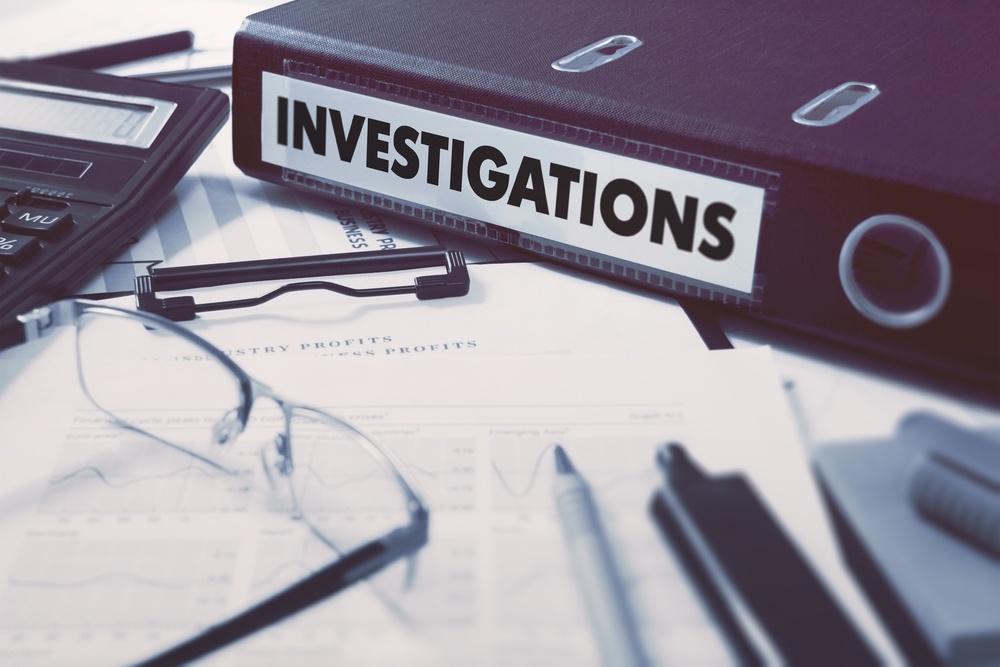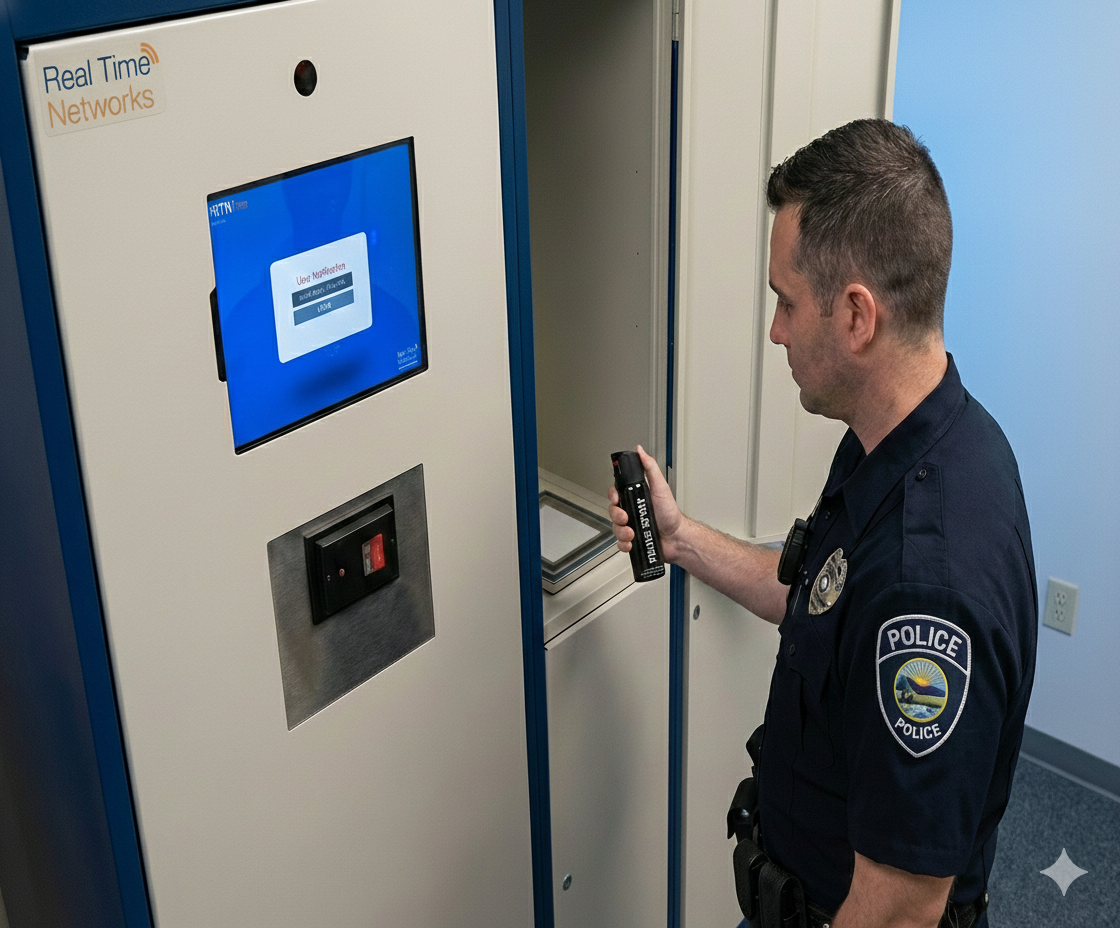By Jay Palter | July 24, 2024
As we all know, theft in the workplace and asset loss are unfortunate parts of running any business. Some of it is malicious, but the majority of losses are due to simple negligence and human error. So, when designing an asset loss prevention strategy, you must automate as many activities as possible.
An asset loss prevention strategy involves a comprehensive approach that includes advanced technology, robust policies, and continuous monitoring. The strategies and tips outlined in this article are designed to help medium-to-large organizations enhance their physical asset security measures. By implementing these practices, you can minimize the risk of loss, improve accountability, and, ultimately, protect your bottom line.
Asset Loss Leads to Both Direct and Indirect Costs

Replacing lost or misplaced equipment involves more than just the direct cost of replacement. Here are some often overlooked indirect costs:
Potential Fines for Data Breaches
Employees' company devices will carry sensitive, confidential, or private data. If that data is breached and leaked, the fines charged for that data breach are hefty.
Productivity Loss During Replacement
Missing essential equipment can halt work. For instance, salespeople without laptops can't contact customers or manage accounts, and IT support without their tools can't fix issues, leading to revenue loss.
Damage Caused from Lost Dangerous Items
Failing to secure unsafe or dangerous items such as weapons or chemicals can have much more dire consequences. If a firearm is not properly secured, it is just a matter of time before it falls into the wrong hands. Many law enforcement agencies must use special lockers to secure their weapons.
Loss of Intellectual Property
Losing intellectual property on data-carrying devices, like laptops or mobile electronics, can be catastrophic. Legal action for recovery requires proof of adequate asset protection measures; otherwise, courts may rule the IP's value as zero.
Cyber Security Risks
We are all well aware of the potential damage of a cyber security breach, and a lost device gives an attacker an express route inside your company’s network. An effective cyber security protocol can mitigate some of these risks, but you’re still in line for trying to control and minimize the damage. Company-wide password resets and security updates are usually not too far behind.
Insurance Claims and Increased Premiums
Some companies may choose to insure items for internal theft and loss. The benefit is that if you are insured, you can file a claim, and the item is replaced. While this can be a great option for peace of mind, the costs of an employee losing or having their business equipment stolen will still equate to the potential insurance claim excess and increased premiums, which over time can be much higher than the business itself taking the hit for replacement. The better option is to protect your assets upfront and avoid filing an insurance claim whenever possible.
Lost Time Spent Recovering Data
Despite the prevalence of cloud storage, essential data is often stored locally. Losing this data means losing work hours and critical contacts, leading to high recovery costs.
Loss of Mission Critical Equipment
Some devices may be relatively inexpensive but may be necessary for mission-critical workflows. If they’re not ready and available when people need them, costly operations can grind to a halt.
Delays in Reporting Lost Items
Employees often delay reporting lost items, hoping to avoid reprimand or believing the item will turn up. This delay can exacerbate the situation and reduce the chances of recovering an asset on time, which often increases the risk and potential damage from the loss.
Protect Your Valuable Equipment
Read our comprehensive guide to everything you need to know about physical asset tracking systems.
10 Ways to Prevent Asset Losses
Losing mission-critical equipment or even just day-to-day use assets can lead to costs well beyond the value of the lost item itself. Employees are affected by lost productivity, losing essential work and valued information, and often don’t report the loss due to fear of reprimanding. Companies lose by replacing the items and possibly face increasingly expensive fines for data breaches and leaked customer information.
Here are ten ways you can help prevent costly asset and equipment losses.
Begin by crafting a security plan that addresses your organization's specific needs and vulnerabilities. Identify critical areas, assets, and potential threats. Then, design protocols that cover access control, asset tracking, alarm systems, surveillance cameras, and employee training.
One key consideration to make is asset protection vs. loss prevention. The former approach focuses on just securing the equipment. The latter is a more holistic approach, where you secure equipment, but also consider the human factor, and include management and security measures for the people that will access your equipment.
Install high-quality surveillance cameras throughout the warehouse. Consider whether asset surveillance tools can help you monitor essential equipment directly.
These act as a deterrent and provide crucial evidence if an incident occurs. Implement real-time monitoring to ensure continuous oversight, allowing for swift responses to suspicious activities.
Establish access control points at all entry points to restrict facility access. You can also add access control directly to advanced asset storage systems. Utilize key card systems, biometric scanners, or PIN codes to ensure only authorized personnel are allowed in. Regularly update access credentials and promptly revoke access for terminated employees.
Educate employees on the importance of what physical security is concerned with, especially asset loss prevention. Train them to recognize and report losses and suspicious behavior immediately. Foster a culture of accountability and responsibility within your team.
Use a robust asset management system to track inventory levels accurately. Smart asset management systems can alert supervisors when equipment is late for return, minimizing losses from employee theft and errors. Technologies like barcoding and RFID can significantly improve transaction logging accuracy.
Maintain a well-organized warehouse with clear labeling and proper storage. Smart locker systems can handle this for you and go a step further by only unlocking compartments to the specific assets a user requests. This makes it easier to spot discrepancies and prevents losses. Regular physical counts should be conducted and reconciled with digital records to ensure accuracy.
Schedule regular audits and inventory checks to detect and address discrepancies promptly. These audits should cover physical counts and system checks, ensuring comprehensive oversight. Again, a smart locker system can automatically inventory all stored equipment in real time.
Establish a relationship with local law enforcement. Share details about your facility's location, security measures, risk profile, and items most likely to be stolen. This partnership can expedite investigations and recovery efforts in case of an incident.
Ensure proper lighting in and around your facility, especially in storage locations for your equipment. That will deter unauthorized access and ensure employee safety. Well-lit areas discourage potential thieves and help employees notice irregularities or breaches more easily.
Review and update your security measures regularly to stay ahead of potential threats. Stay informed about the latest security technologies and industry best practices. Consider periodic security assessments or expert consultations to identify areas for improvement.
What Options Do I Have to Protect My Equipment and Physical Assets?
Asset lockers are reliable for safeguarding your valuable equipment and other physical assets. They are particularly effective for tracking and securing items like tablets, laptops, and mobile devices. Through smart automation technology, they easily provide the following:
- Detailed Audit Trails—Asset lockers offer comprehensive audit trails, recording exactly who accessed each device and when. This level of transparency helps maintain accountability and security within your organization.
- Alarms and Notifications—These lockers can be configured to trigger alarms if a device leaves the facility or is not returned to its designated compartment by a specified time. This feature ensures that assets are monitored and managed effectively.
- Integrated Charging Bays—Many asset lockers include charging bays for electronic devices, ensuring they are always ready for use. This not only protects the devices but also enhances their usability and convenience.
- Advanced User Authentication—Access to asset lockers can be controlled through various authentication methods, such as Prox cards, biometric fingerprints, PINs, or IRIS scans. This ensures that only authorized personnel can access the devices, significantly enhancing security.

See how AssetTracer can enhance your security and reduce asset loss risks
Get full control of your assets, streamline operations, and increase productivity.
Subscribe to our blog

Jay Palter
Vice President of Marketing & Partnerships




